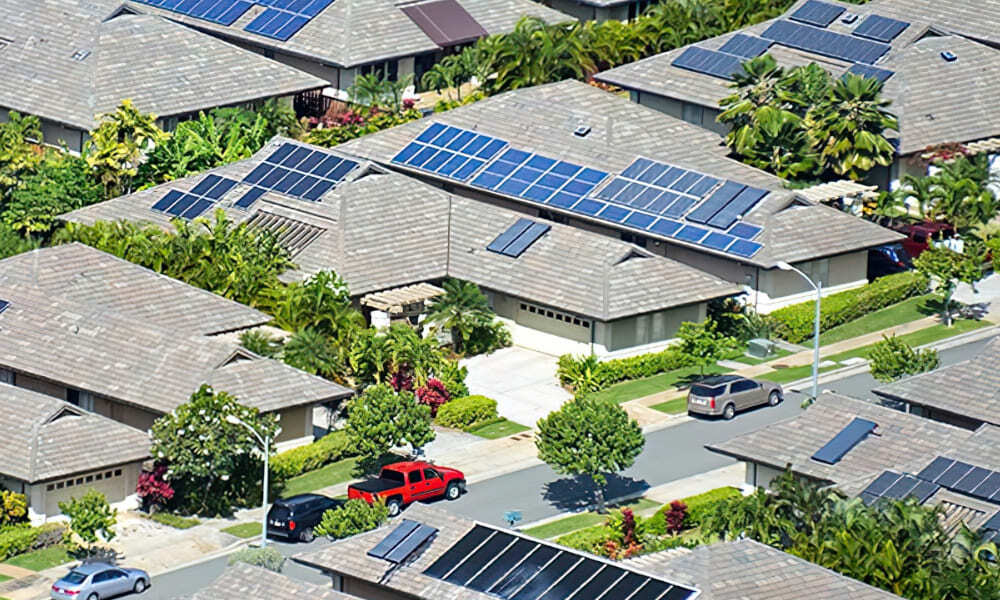The Residential Clean Energy Credit Allows You To Subtract 30 Percent Of Solar Costs Off Your Federal Taxes, Through 2032
The Inflation Reduction Act has made investing in solar panels and storage batteries more appealing for many households than it was even a few years ago, given the nation’s escalating electricity and home energy expenses.
You can deduct 30% of the cost of installing solar heating, solar power generating, and other solar household items from your federal taxes thanks to the new legislation’s Residential Clean Energy Credit.
The benefit, which has been revived from an earlier, less beneficial federal tax credit, will be accessible to taxpayers for over ten years. This means that homeowners who are thinking about installing solar panels have plenty of time to do it.
These are the main points.
What Is the Solar Tax Credit?
You are entitled to a nonrefundable credit against your federal income taxes, equal to 30% of the qualified expenses if you install solar energy equipment in your home at any time between now and the end of 2032.
There is no cap on these costs; regardless of whether you spend $20,000 or more than $100,000 on costs related to a residential solar system, you are still eligible for the 30% tax benefit.
How You Can Take Advantage of The Inflation Reduction Act
Consumer Reports explains how buying a heat pump for your home could get you thousands of dollars in federal tax credits and state rebates. We also fill you in on credits and rebates for electric cooking appliances and which cars will qualify for the new electric vehicle tax credit.
What Expenses Are Eligible for The Solar Tax Credit?
According to the Department of Energy and the new law’s language, the same expenses covered under the old law are eligible for this new solar tax credit:
- Solar photovoltaic (PV) panels.
- PV cells are used to power an attic fan (but not the fan itself).
- Contractor labor for onsite preparation, assembly, or original installation.
- Permitting fees, inspection costs, and developer fees.
- All equipment is needed to get the solar system running, including wiring, inverters, and mounting equipment.
- Storage batteries. (You can claim the tax credit for these even if you buy and install them a year or more after you install the solar system.)
- Sales taxes on eligible expenses.
In a change from the old law, eligible battery storage units that you install must store at least 3 kilowatts.
How Will the Solar Tax Credit Save You Money?
Your federal taxes are decreased by the tax credit. Therefore, if you spend $24,000 on a system, you can deduct $7,200 from your federal taxes, or 30% of that amount. (You have to claim the year when the installation is finished.)
A $7,200 credit would make your tax obligation zero if, for example, you would have to pay $7,000 in taxes before the credit. However, you cannot get a tax refund for the remaining $200. However, you are permitted to carry the balance over to a future tax year.
Also saving is less expensive electricity expenses. Your household’s electricity usage, the size of your solar system, how much sunlight it receives, and the local electricity tariffs all have a role in how much you’ll save.
According to real estate experts, a purchased solar system—rather than one that is leased—can increase the value of your property when you decide to sell it.
How Long Does the Solar Tax Credit Last?
The 30% credit is valid until December 31, 2032. If Congress doesn’t keep it going, it will fall to 26 percent in 2033, 22 percent in 2034, and ultimately vanish in 2035.
The new law replaces an earlier statute that would have offered a 26 percent credit for solar installations this year and a 22 percent credit in 2023 and was slated to expire in 2024.
Who Can Get the Solar Tax Credit?
For their primary or secondary house located in the United States, it is available to all taxpayers.
Any taxpayer can benefit from it, regardless of income level. You can utilize it whether you take the standard deduction or itemize your taxes.
But keep in mind that you can only benefit from the solar tax credit if you buy a solar system; if you lease one, you are not eligible. The same holds if you belong to a cooperative that buys power.
However, you can claim credit for your share of the purchase if you are a tenant-stakeholder in a co-op. You can also get credit for the portion of the cost that went toward a collective solar installation.
Do You Still Get the Federal Tax Credit If Your State Also Offers One?
The new law doesn’t reduce your federal credit if your state also offers one. But it will be up to your state’s taxing authority whether your state credit is reduced if you take advantage of the federal one.
Can You Use This Credit If You Also Use Other Federal Energy Tax Credits?
Yes. The updated non-business energy property credit under the new law also covers other qualified efficiency improvements like air-sealing insulation, Energy Star-certified exterior windows, Energy Star-certified exterior doors, upgraded electrical circuit panels, and heat pumps.
Depending on when the installations are finished, you can claim both credits on your federal return either in the same year or in different years.
The Energy Efficient Home Improvement Credit, as it is currently known, has budget limits for some products, such as $600 for windows. However, you can deduct 30% of the cost of the majority of things up to a maximum of $1,200 every year. (Heat pumps are exempt from the item or annual maximums; you may deduct up to $2,000 for the expense of buying and installing a heat pump.)
A significant plus: Up until 2032, you may claim the Nonbusiness Energy Property Credit. Previously, taxpayers could not claim the credit for later renovations if they exceeded the “lifetime limits” for qualified home improvements under that provision.
Accordingly, you could theoretically install one or two new Energy Star-certified windows annually and be eligible for the $1,200 credit.











